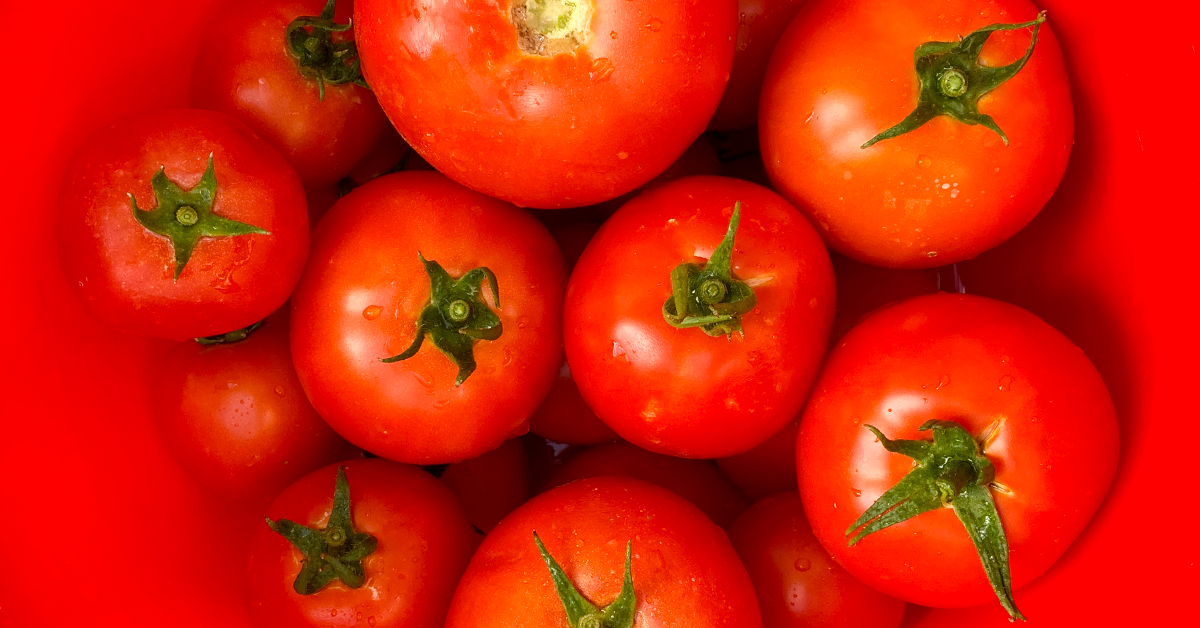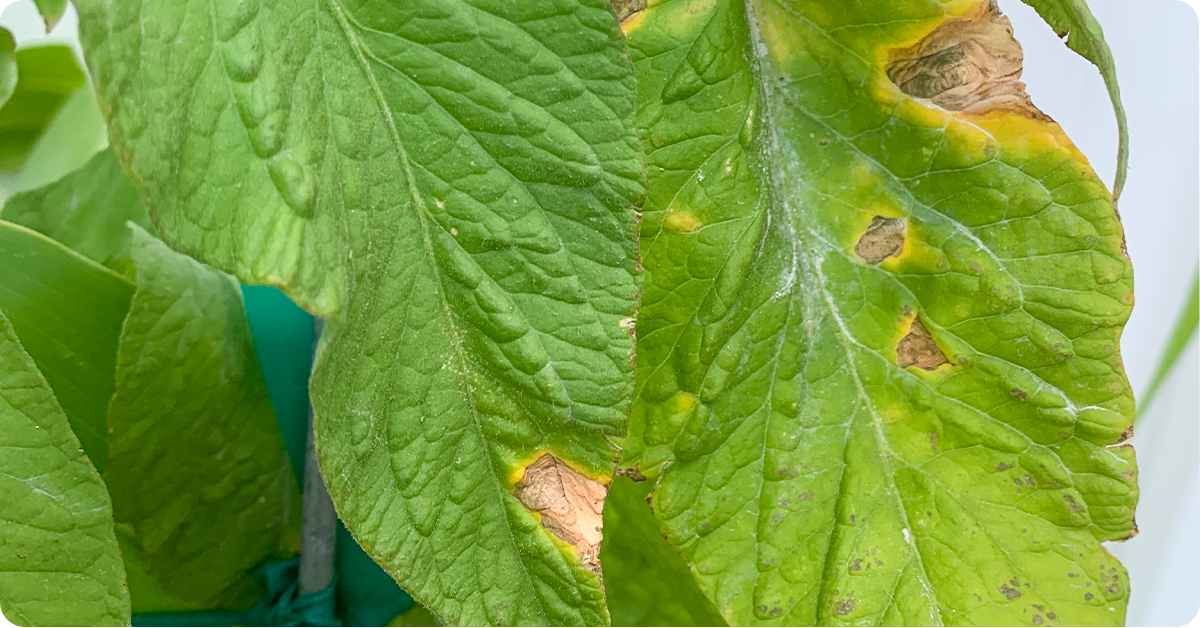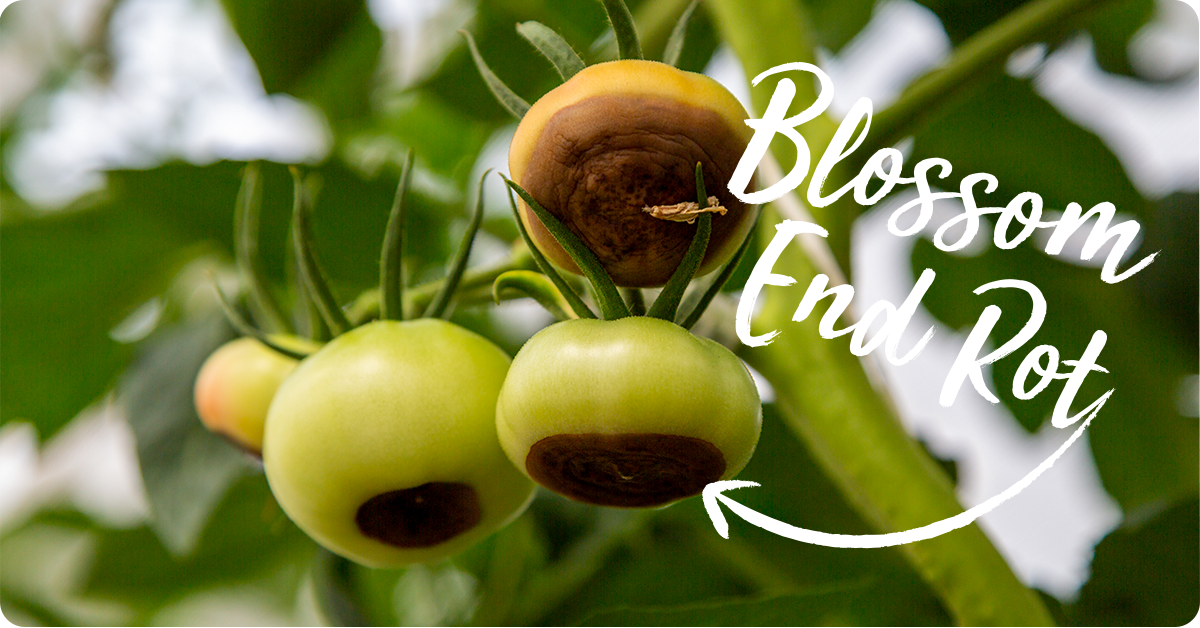
Fresh salads, savory sauces and simple fares like a classic hamburger or BLT are enhanced by the unique, incomparable flavor of garden-fresh tomatoes. The robust fruits are popular with seasoned growers, backyard gardeners and those testing out a newly discovered green thumb due to their versatility and flavor in the kitchen.
While nothing can compare to the taste of a fresh-picked tomato, it is common to find your tomato plants falling short just when you thought you’d have a plentiful harvest. So, what does it take to have an abundant harvest? Start by understanding what your tomato plant needs and what it may be telling you.
Knowing what a healthy tomato plant needs and recognizing current or potential problems impacting your harvest will promise bigger, more nutritious tomatoes this season.
How to Plant Your Tomatoes
Climate, soil condition and water availability are all well-known factors influencing tomato plant growth, health, and overall productivity.
While you can’t control the weather or even choose the type of soil naturally present in your backyard, you can understand the needs of your tomato plants to better provide them the conditions and nutrients they need.

Caring for Your Tomato Plants
Once you have planted your tomato seeds, it is time to nourish those seedlings as they grow into tall, healthy plants. Watering, spacing, and soil preparation are crucial aspects of successful gardening, but the work doesn’t stop there.
You’ll need to support and protect your tomatoes as they grow. With a bit of care and time in the garden, you'll have much better chances of a bountiful harvest.
Here are some initial steps to consider when growing tomatoes.
Fertilizing Tomato Plants
You should begin preparing your soil long before your tomatoes actually call it home. Start by adding composted organic matter and an all-purpose fertilizer to promote the growth of the young tomato plants. The fertilizer should be low in nitrogen, high in phosphorus and medium-to-high in potassium. A 7-22-8 blend, like Fertilome Tomato and Vegetable Food, is a great pre-planting fertilizer option that will help promote root growth and a healthy plant throughout the growing season.
There are many organic sources of macronutrients but they are often high in nitrogen and low in phosphorus and potassium, which is not ideal for young tomato plants.
While fertilizing is a great way to give your soil a nutrient boost, it's important to be mindful and not apply too much. Follow the label instructions, and you'll prevent any issues that over-fertilizing might cause, such as delayed tomato production or damage to the plant.
Pollinating Tomato Blooms
Tomato blossoms usually get pollinated when a gentle breeze helps release their pollen. But if there's not much wind or your plants are tucked away in a spot with poor airflow, like near a wall or fence, they might need a little extra help to pollinate properly.
To pollinate your tomato plant, gently shake its branches every one to two days to help release the pollen by hand. Do so carefully though, you don’t want to dislodge any blossoms or harm the plant’s branches.
Ideal Temperatures for Tomato Growth
 Although tomato plants are generally hardy, they still need the right conditions to grow. Your plants will not be able to withstand temperatures below 35°F. Be aware of daily and nightly temperatures in your area, and be sure to offer your plants some protection if temperatures drop below 40°F. Buckets, frost blankets, milk jugs with the bottom cut out, wax-paper HotKaps or Season Starters are all great ways to protect your plants from the cold.
Although tomato plants are generally hardy, they still need the right conditions to grow. Your plants will not be able to withstand temperatures below 35°F. Be aware of daily and nightly temperatures in your area, and be sure to offer your plants some protection if temperatures drop below 40°F. Buckets, frost blankets, milk jugs with the bottom cut out, wax-paper HotKaps or Season Starters are all great ways to protect your plants from the cold.
On the other hand, tomato plants will fail to produce or abort flowers if temperatures are too high. Daily temperatures above 95 and nightly temperatures above 70°F will cause blossoms to drop or stop from forming.
To keep your plants cool during the hottest parts of the day, try using a shade cloth or planting them in a spot with some natural shade. Plus, you can give your flowers a little boost by using Fertilome's Tomato & Pepper Set, a natural growth regulator that helps promote flower retention and fruit development.
Watering Tomato Plants
Having originated in the desert southwest, keeping tomato plants too wet can become problematic. However, inconsistent watering creates a host of problems as well. Your tomato plants will need regular soil moisture, but not necessarily daily watering.
Check for soil moisture by probing one to two inches below the surface with your finger to determine if the soil is truly dry or not. Tomatoes do best with drip, flood or furrow irrigation that more readily introduces the water to the soil to be stored and easily used by the tomato plants. Don't water just because the surface looks dry. Be sure to check soil moisture in the morning or afternoon to avoid overwatering. This can cause a lack of calcium utilization by the plant.
Pruning Your Tomato Plants
While not always necessary, pruning can be a great way to protect your plant’s health and produce healthier, bigger tomatoes earlier in the season.
It’s important to note that only indeterminate tomato plants should be pruned. Since determinate plants grow at their own pace, it is best not to interfere. However, indeterminate plants will continue to grow as long as the conditions allow, so pruning is an excellent way to support the plant's size, shape and health.
Before you consider pruning, you need to give your plant time to grow. Upward growth is the goal, and indeterminate tomatoes do best when grown with a support or tomato cage. Once your plant has developed a few producing branches, it may be time to start pruning.
Start by looking for small shoots or leaves growing where a branch meets the stem, called "suckers." Pruning suckers will focus the plant's production on fruit instead of foliage. You should also prune any limbs, leaves and flowers touching the ground to prevent pest damage and other diseases.

Signs of Poor Production, Diseases and Pests
Plant Leaves Are Turning Yellow
One early sign of your plant’s overall health is the color of its foliage. Leaves often turn yellow under poor growing conditions. Although there are many reasons for it, improper watering, extreme temperatures and disease are the most common.
Flowers Aren’t Developing
A beautifully green tomato plant does not necessarily guarantee it will grow an abundance of tomatoes. Plants need to produce and maintain healthy blossoms that can be fertilized to grow the tomatoes you hope to enjoy.
Poor nutrient balance and availability, unfavorable temperatures or inadequate watering can cause your tomato plants to not produce or lose these all-important blooms.
Excess Nitrogen
Too much nitrogen in your soil can cause excessive green growth in your tomato plants and restrict flower development. Too much nitrogen in the soil is generally caused by using a nitrogen-rich fertilizer or failing to evenly distribute fertilizer.
 To prevent this, you should spade or till phosphate into your garden when preparing the soil in the spring.
To prevent this, you should spade or till phosphate into your garden when preparing the soil in the spring.
Suppose you notice signs of limited flower production in your plants. In that case, you can encourage flower development by applying Fertilome Blooming & Rooting Plant Food (9-58-8). Simply add this fertilizer powder to water according to the directions and spray on the foliage of the tomato plants.
Water Deficiency
If your plants are not receiving adequate moisture, the flowers will not be able to fully develop. Ensure the plants have access to enough water by probing one to two inches below the soil surface with your finger. If the ground feels damp, your plants should have the necessary water, but if not, you should wet the soil using a drip, furrow or flood irrigation system.
Be careful not to overwater since this can cause just as many problems with tomato development as under-watering.
Extreme Temperatures
The productive temperature range for tomato plants is between 35 and 95°F. If temperatures drop below or rise above this range, you run the risk of losing your plant and/or the blossoms needed to produce.

The Tomato is Flowering, but There’s No Fruit
Producing a beautifully juicy tomato requires your tomato plant to not only develop blossoms but set fruit. It is common in Utah and surrounding areas for tomato plants to not set fruit due largely to extreme temperatures. Some tomato plants also fail to set fruit due to a lack of physical ability and size or low pollination.
Inadequate Plant Size
For a tomato plant to produce and support fruit, it must be strong and tall enough to do so. You can help your plants grow strong by fertilizing with limited nitrogen. Using a 16-16-8 fertilizer blend such as IFA Premium Garden Fertilizer after planting and every four weeks throughout the growing season is a great way to keep nitrogen available to your tomato plants.
As the tomato plants blossom and continue to grow, it is helpful to provide them with support from stakes, cages, trellises or panels. Supports give the tomato plant and developing fruit room to expand upward and outward without additional strain to the plant.
Choosing the proper support depends on the variety of tomatoes. Determinate tomato plants stop growing at 3–4 feet, so cages and stakes provide plenty of support. On the other hand, indeterminate tomatoes just keep growing (and growing), so they are best supported when trained up a trellis, fence or another panel.
Low Pollination
Pollination is an essential factor for any kind of flowering. If your plants are shielded from airflow, try carefully rustling the plants every day or two by hand to promote pollination.
High Temperature
Since tomato plants cannot handle frost, they must be planted after the last frost when the weather is clearly transitioning into the summer months. But temperatures rise quickly in the Intermountain West, so don’t wait too long to plant your tomatoes or the high temps may cause your plants to abort their flowers.
As we mentioned earlier, give your plants shade or apply Fertilome Tomato & Pepper Set when it’s hot to encourage flower development and retention.
Tomatoes Aren’t Ripening
Your tomato plant blossoms have formed and set, but the tomatoes you have waited so patiently for will begin to appear in the form of tiny green spheres. Your young tomatoes will continue to grow and develop until finally transitioning to their final, fabulous color when they are ripe and ready to harvest.
But, what if your tomatoes refuse to ripen? Chances are the plants are overwatered or over-fertilized.
Over Watering
As a desert plant, tomatoes are programmed to hold their fruit if there is an abundant water supply. The tomato plant will hold onto these fruits until the plant runs out of water, at which point they will all ripen at once.
You can promote tomato ripening by spacing out your watering more as the fruit begins to set. It is good practice to test the soil one to two inches below the surface with your finger and only water when the soil is dry at this level.
Too Much Fertilizer
Overfeeding your tomato plants can cause them to retain their fruit and prevent your tomatoes from ripening. Prepare and fertilize the plant’s soil with a high phosphorus blend such as Fertilome Tomato and Vegetable Food (7-22-8) before planting and then only fertilize with a higher nitrogen blend such as IFA Premium Garden Fertilizer (16-16-8) every four weeks. You can also space out your fertilizer applications more once the tomato plants have set fruit.
Tomato Skins Are Splitting
After hours of diligently caring for your tomato plants, you see the fruits of your labor as tomatoes begin to ripen and take on that beautiful glowing red. But you are not home-free just yet.
Your tomatoes are now susceptible to "cracking" or "splitting," which means the skin of the tomato is prone to burst or break open. This will happen either because the tomato grows too rapidly (due to over-fertilizing) or improper watering.
High Fertilizer
Over-fertilizing can lead to rapid growth that exceeds the stretchy ability of the tomato’s skin, causing it to tear open as the fruit ripens. To prevent splitting, simply avoid over-fertilizing. You should stop applying fertilizer to your tomato plant once it has reached a desirable size and allow the tomatoes to grow.
Uneven Watering
Another common reason tomatoes crack is uneven watering. This is especially prevalent in cherry tomato varieties as they contain more sugar and thinner skin. Watering directly or excessively onto a plant can cause the tomatoes to take in that extra water and split due to a lack of capacity and strength of the skin.
Avoid this by watering at the base and scheduling watering. You can also stop cracking by picking the fruit before it is perfectly ripe.

Dark Spots and Blossom End Rot
Dark leathery spots on your tomatoes are more than just an eyesore. These dark patches are known as "blossom end rot" and result from insufficient calcium intake.
Blossom end rot is a problem that occurs early on in tomato plant growth and fruit development. However, it is not apparent until these dark patches appear. It occurs due to inconsistent watering practices that ultimately impact the tomato plants’ ability to access needed calcium.
Inconsistent Watering
The best way to protect against blossom end rot is to maintain a consistent water system/schedule so that the plants are adequately nourished but not over-watered.
A drip, furrow or flood irrigation works well for tomato plants. Soil moisture can be gauged easily by probing one to two inches below the soil surface. You should hold off on watering until the ground is no longer moist at this level.
Add Calcium
Once you have corrected your watering schedule, future blossoms should have the calcium they need to prevent blossom end rot. However, if these new blossoms are still producing tomatoes with dark, leathery spots then it’s time to take more direct action by adding calcium to your soil. Applying Hi-Yield Calcium Nitrate or Fertilome Yield Booster will solve the calcium deficiency in the soil, tomato plants and any new fruit.
Ready, Set, GROW!
A plentiful harvest of vibrant and juicy tomatoes is within your reach but all the fantastic flavors are simply a bonus to the sense of pride you will receive from watching the efforts you put into your tomato plants pay off with their productivity.
Let us help take your tomato production to the next level by providing your plants what they need to be successful. Stop by your local IFA Country Store to speak with one of our gardening experts for advice and answers to your tomato and other gardening questions.
Information for this article was provided by Brinn Hutcheon, Garden Center Asst. Manager, Riverton IFA Country Store; Brenda Christopherson, Garden Center Manager, Ogden IFA Country Store; and Marvin Potter, Garden Center and Live Plants Category Manager, IFA Country Store



















